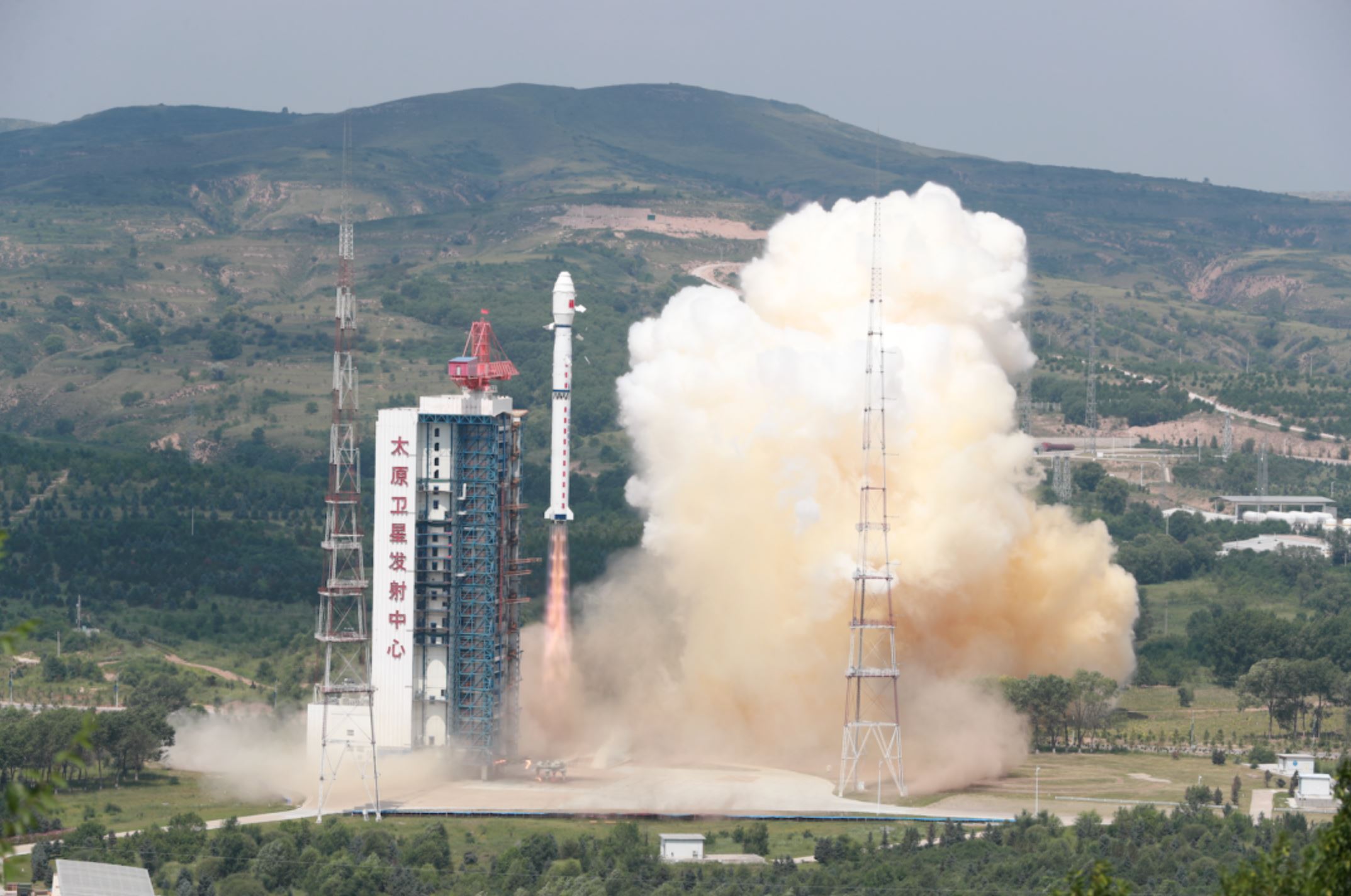China launches carbon and ecosystem monitoring satellite (video)
It was the 100th consecutive successful liftoff for the Long March rocket family.
China launched a carbon and ecosystem monitoring satellite and two smaller payloads with the country's 28th launch of 2022 late on Wednesday (Aug. 3).
Liftoff of the Long March 4B rocket carrying the three satellites occurred at 11:08 p.m. EDT on Wednesday (0308 GMT or 11:08 a.m. Beijing time on Aug. 4) from the Taiyuan Satellite Launch Center in north China.
Colorful shock diamonds created by the rocket's exhaust and falling insulation tiles were visible as the Long March 4B climbed into the sky.
Related: The latest news about China's space program

The main payload was the Terrestrial Ecosystem Carbon Inventory Satellite (TECIS 1), designed to measure forest vegetation biomass, aerosol distribution and solar-induced chlorophyll fluorescence. The fluorescence data, which will be gathered with an imaging spectrometer, will help monitor the status of vegetation photosynthesis on a global scale.
TECIS 1, approved by the China National Forestry Administration and built by the China Academy of Space Technology (CAST), will be used to evaluate major national ecological projects and monitor the atmospheric environment and the influence of aerosols on climate change.
The two secondary payloads were the HEAD 2G and Minhang Youth Satellite. HEAD 2G was developed by Beijing-based HEAD Aerospace Group to collect ship and flight data and will conduct remote sensing demonstrations. It is part of HEAD's plans to build a "Skywalker" constellation of 48 "internet of things" application satellites.
Get the Space.com Newsletter
Breaking space news, the latest updates on rocket launches, skywatching events and more!
Minhang Youth Satellite, named for a Shanghai district, will promote middle and primary school students' participation in space-related science and engineering activities.
The Long March 4B was provided by the Shanghai Academy of Spaceflight Technology (SAST). The launch was China's 28th of the year so far, with plans to launch more than 50 times throughout 2022.
The China Aerospace Science and Technology Corporation (CASC), the country's main space contractor, stated that the TECIS 1 mission marked 100 consecutive Long March launch successes, going back to May 2020.
Follow us on Twitter @Spacedotcom or on Facebook.
Join our Space Forums to keep talking space on the latest missions, night sky and more! And if you have a news tip, correction or comment, let us know at: community@space.com.

Andrew is a freelance space journalist with a focus on reporting on China's rapidly growing space sector. He began writing for Space.com in 2019 and writes for SpaceNews, IEEE Spectrum, National Geographic, Sky & Telescope, New Scientist and others. Andrew first caught the space bug when, as a youngster, he saw Voyager images of other worlds in our solar system for the first time. Away from space, Andrew enjoys trail running in the forests of Finland. You can follow him on Twitter @AJ_FI.









